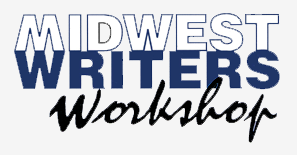Jane Friedman's Blog: Jane Friedman, page 208
August 8, 2011
When Mom Was My Age (#41)
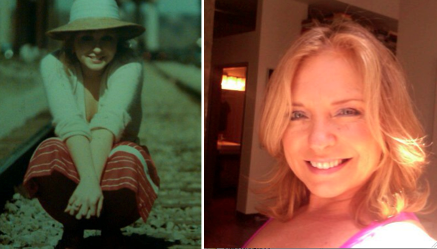
Patricia Jean Saiger Limbacher (age 20 & 47)
"When Mom Was My Age" is an interview series between daughters and mothers. New interviews appear every Monday. If you would like to participate, contact Jane.
The following interview is with Patricia Jean Saiger Limbacher (age 47), reflecting on her life at age 20, interviewed by daughter Rachel Saiger.
From Rachel
My mom, Patricia Jean Saiger Limbacher, is definitely someone that I have learned so much from. A lot of it is what not to do as a teenager and college student, but even with all the crazy choices she made when she was young, I think she became a great mother for me. I love hearing stories about her life, and I feel like the stories I was told as a child (censored then), guided how I grew up and have made me who I am today. I love that my mom was so open with me and my siblings. Because of that relationship I have been able to confide in her throughout the challenges in my life. It's hard to think that my mom wasn't always a perfect, sweet, and yet embarrassing woman, but it makes her more human and a lot more relatable.
Where did you live?
I couldn't wait to be free and on my own, but wasn't allowed to move away from home. I did finally move out when I was twenty-one, but my twentieth year was a year of rebellion. I spent as many nights with my friends as allowable. I would sleep on couches, decks, share friend's beds, and occasionally sleep in my own bed at the home my parents had since my third year of life in Cincinnati, Ohio. I had three different bedrooms over time and this final bedroom felt more like a demotion.
Where were you working?
I had been working as the manager of my father's photo stat business, but the economy was poor in the early eighties, and he had me teach one of his full-time employees to take over. I then began working a family-style fish and chicken restaurant that had just opened, and was quite proud to have been a part of, even if it was a middling job. I worked as a waitress, and loved it.
What would you do on a normal day?
I'd get up at 11:30 or noon, drink a Mountain Dew, smoke a cigarette, get ready for work, and get a sandwich, usually with a girlfriend I worked with. Then we'd head to work by 2 and work 'til 8 or 9 and run to someone's place to doll up and go drinking and dancing at a club 'til closing. (Back then the drinking age was 18.) Once the club was closed we'd go for breakfast and hang with whomever, and go to bed only to do it again.
What were you most worried about?
Not dying, and not getting a sexually transmitted disease. We didn't worry about AIDS yet. I was involved with two different guys at that point, and they were not monogamous.
What did you want for your future at 20?
I wanted something better and something different. I wanted to live somewhere away from what I knew. I assumed it would involve a job, a man who was my husband, and children. I had visions about a home, and how cute it might look, and hoped to travel, but beyond that I wasn't future oriented.
What do you think of who you were at 20 compared to now?
At my core I am the same girl, but I changed dramatically when I was twenty-one and have continued to evolve even to this day, and of course I knew I would. That was one crazier than normal year of breaking free from what I was, learning what didn't work, who I wanted to be, what I needed to do, and what kind of people I needed to surround myself with to get there. Those friends were NOT those people, but they helped me see the light.

August 5, 2011
Behind the Curtain of Memory
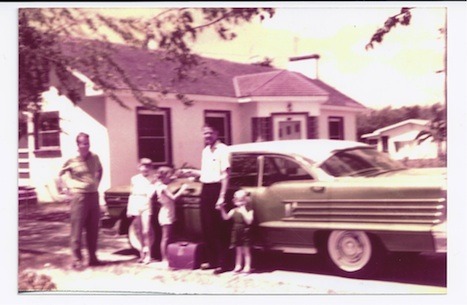
On far right: Darrelyn Saloom in McAllen, Texas (1958), holding the hand of her Daddy, Darrell Milas Wilkerson
Before the kidnapping, I lived with my father and two older sisters in Austin, Texas. In second grade—1963—Daddy longed to enroll me in an art program at a progressive academy because I covered our walls with words and drawings of rotary telephones. I'd never attend the conservatory, but I remember holding my father's hand as a silvery-bearded headmaster toured us through classrooms.
Our rented apartment had a pool in the center of the complex at the top of a hill. My father drove my sisters and me to public school every morning in a light-turquoise T-Bird. Daddy shifted the bird into neutral and we'd glide the whole way down. He didn't own the car for long. He traded vehicles the way he did towns and never bought a house in his lifetime. He had no need. My father was a traveler.
The night of the kidnapping, I remember the pool's reflection, Daddy, Mama, stepdad, and a policeman. My sisters were told over and over to stay in the apartment, but they kept sneaking back towards the drama in fear of losing their baby sister to our mother who pleaded to let me live with her.
The policeman asked me if I wanted to stay or to go, an impossible question to answer with both parents in tears. Unable to speak, a decision was made to allow me to spend the night at a motel with my mother, who had not seen me in months? A year? Wailing, I climbed in the backseat of Mama's Rambler, my sisters running alongside the car as we drove away.
At the motel, I was told to stay put. My mother and stepfather rushed inside and right back out, flung suitcases in the trunk, and fled to Louisiana. My only memories of the trip are of thick cigarette smoke and looking out the rear window as we crossed the border to say goodbye to a Texas-shaped limestone marker that sealed my fate.
After the kidnapping, I gained a beloved stepsister only six months my senior and two much-older stepbrothers. I also inherited a stepfather who carried deep wounds and a money clip found in his oldest son's pocket when he died in a motorcycle accident. My stepdad was a kind man when sober, a violent man when drunk.
In my new neighborhood with coulees that flooded, I cycled at night on borrowed bikes. Nothing pleased me more than lights on and wide-open curtains, inviting me to peek into other families' lives. How normal they seemed. I wondered what it would be like to live in those houses with my parents and siblings and meals served on dining-room tables.
I also wondered what makes a woman kidnap her child. Is it kidnapping if a mother does it? Why do women stay with drunken men who hit them? Why do some men travel while others return home every day at 5:45? Why did my mother choose me? And why do I hide when voices are raised? Long shadows of questions begged to be answered.
As I try to remember the events of my childhood, I can't help but mull over and not know how much is myth and how much is true. To find the answers, I scurry behind the curtain of memory and fill my pockets with dirt-encrusted nuggets, chisel away layers of grime for a glimmer of truth. There, my anger dissolves to make room for writing with understanding and love.
Other memories are uncovered in Proustian moments—a Johnny Rivers or Roy Orbison tune, the smell of anything Chef Boyardee or a TV dinner baking in the oven, the cracking sound of a beer can when someone peels back the tab. Reruns of Bewitched and My Three Sons, the movies Pinocchio and The Sound of Music.
Today's mantra is to live in the present moment, and perhaps I am missing something by roaming back in time to wash away myth from truth. But I've discovered the best nonfiction writing takes place behind the curtain of memory—where beauty is revealed in the flawed characters of your life, nuggets of gold worthy of excavation.
Top photo: This is five years before the kidnapping (1958) of an unknown man to the left; my sisters, Jeanne and Janie; and Daddy holding my hand. It was a sad day because Daddy was always traveling and was about to journey off again.
Below: After the kidnapping in Lafayette, Louisiana, in 1964. My stepsister Judy is on the left. I'm on the right with my legs tucked under me. [Click the photo to view at larger size.]
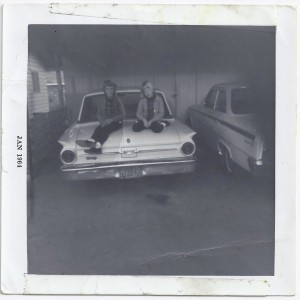
Judy Tagert & Darrelyn Saloom in Lafayette, Louisiana (1964)

August 4, 2011
The Secret to Twitter That Can't Be Taught

Christina Katz
I've found Twitter—and many aspects of social media—somewhat tricky to teach.
Why? Here are 3 reasons to start:
Using social media is mostly about being YOU, finding your voice, and finding the right audience (those inclined to listen).
Your strategy, motivation, or purpose will be different—and it will change—depending on where you're at in your career. That means I can't teach you by explaining what I do; my strategy cannot be your strategy.
Whenever you set out to use social media as a means to an end (e.g., selling books), that tends to ensure you won't attain your end. It's a very Zen process that doesn't necessarily reward those who "try" the hardest.
That's why I love this interview with author Christina Katz about using Twitter. Here are a few wonderful snippets:
I'm not sure that people like to hear that the tools can become intuitive if you use them enough or that you are actually allowed to take a break because folks often approach the tools as marketing channels or bullhorns. But social media tools are really much more fun and intuitive if you use them for social artistry rather than if you spend all your energy trying to get followers or trying to get folks to buy your stuff.
My experience of using online tools is that you are basically plugging in and expanding your sensibilities the same as when you walk into any room. Writers should think of all of the online tools as an extension of their own nervous system. If you walk into a room, you would get an immediate intuitive sense of the environment. The same is true of Twitter or any online environment. When you connect into to theses contexts, you are not acquiring billboard space. You are entering a context, an environment. Don't over-think how you are going to act. Just do what you would do if you were entering any new room. After a while, you will become "a regular" and people will look forward to seeing you when you show up.
Click here to read the full interview.
P.S. I'm thinking of Christina in particular today because I'm headed off to speak at the Willamette Writers Conference, where Christina and I first met! If you're at Willamette, I hope you'll say hello.

August 3, 2011
List Making & The Creative Process
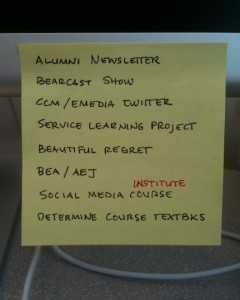
A list on my work monitor
I love making lists. Big-picture lists, daily lists, grocery lists, checklists … you name it, I list it.
I even make little list tools that sometimes other people enjoy. (For example, click here for my Weekly Goal Sheet. Here are specific instructions on how to use it.)
Lists are a personal thing—they speak to the ineffable in us—which is why it's so enjoyable to look at how or what other people list. Once there was someone who found my lists so representative of me (or perhaps so neatly adorable) that he kept one as a memento.
This month's Glimmer Train bulletin offers a thoughtful piece by Yelizaveta P. Renfro. She describes how lists play into her creative writing process. (My process is rather similar!)
My stories and essays begin with lists. On whatever is at hand—and often in the margins or endpapers of books I'm reading—I jot down fragments in the order that my mind offers them. This first step is a purging of these pieces, without structure. It's notating in shorthand what will go in the container, whether the container is an essay or a story.
Go read the full piece for excellent insights and inspiration.
For more celebration of lists (or voyeuristic peeks at others' lists):
To-Do List. A new list is posted every Monday.
Milk Eggs Vodka. A wonderful website + book that focuses on grocery lists.
If It Won't Fit On A Post-It, It Won't Fit In Your Day. Fabulous advice for managing your daily to-do list.
Action Method journals. This is a marvelous tool (and method) for list makers.
Also—I'm curious about other writers' lists. Want to share a picture of yours, along with an explanation of how you use lists? If enough people are willing to share, I might start a feature on this blog. Drop me an e-mail or leave a comment if you'd be willing to participate.

August 2, 2011
Draft Your Platform Action Plan: 5 Worksheets
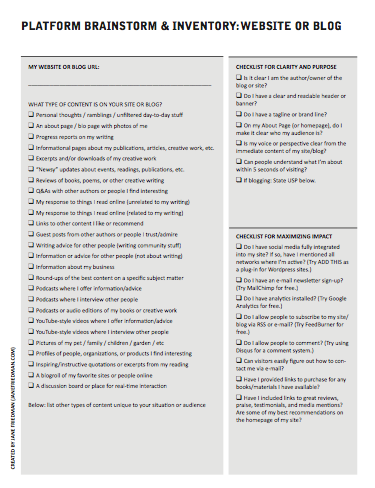
Platform Inventory Worksheet, reduced size
Last weekend at the Midwest Writers Workshop, I offered a workshop on author platform building. Part of the workshop included 5 worksheets to help writers take an inventory of their platform (as it stands today), and also brainstorm how to better grow it.
Good news for you: I'm making my platform worksheets available for free.
Below I've offered an explanation of each worksheet.
New writers may think they don't have a "platform," but everyone does. It might not be big or dramatic, but you do have one. These worksheets help you think about that platform from multiple angles, and for those who are advanced enough, you can also put some numbers behind it.
Note: If the term "platform" is new to you, in short, it can be defined as whatever gives you visibility and an ability to connect with readers. I gave some fundamental advice about developing platform in this blog post at my Writer's Digest blog: The Hardest Part About Developing Platform
A brief guide to the 5 worksheets
Content. This worksheet helps you brainstorm all the content you currently own rights to, and prompts you to think of ways you might repurpose it for different mediums or channels.
Website/Blog. This worksheet is especially helpful for fiction writers or poets who aren't sure what to blog about. The checklist acts as a prompt/creativity tool to get you thinking beyond "I'll just write about my own work." I've also included a checklist of questions about your site's purpose, and how to maximize its impact. Note: USP stands for "unique selling proposition"—and if you can't fit the USP into the space provided, it's probably too complicated or unfocused.
Social Media. This worksheet takes stock of your social media presence, and prompts you to think about where your audience might actually hang out (rather than just where other WRITERS hang out).
Relationships. This is the invisible fuel of just about everyone's platform. It's hard to make progress if you're working alone. Most people are (pleasantly) surprised when they really start to think of the number of people and organizations they know.
Actual Reach. This worksheet can be especially helpful if you're putting together a book proposal, or doing a 6-month or annual inventory of where and how you seem to be succeeding. It is somewhat limited and could be crass, depending on who you are (numbers don't tell the whole story, not by a long shot), but metrics can be essential in being more efficient with your efforts. (Note: Book sales and downloads are also part of your metrics; add those if applicable to you.)
Do you have questions about platform, or about the worksheets? Please leave a comment!

August 1, 2011
When You Have Anxieties About Change
Yesterday, I was a guest over at Writer Unboxed, discussing the anxieties that surrounded my move from "Writer's Digest blogger" to "independent blogger." Here's a snippet.
When it comes to personal change, I feel protective of what story gets told about it. As writers, we should be super-cognizant of the power of storytelling in our own lives. The stories we tell about our lives become our lives. Plus the stories we tell about ourselves send signals to others about how they should respond and treat us. (Remember this!)
P.S. If you've had trouble with the RSS feed for this site, I've updated the feed to be more friendly. Click here to subscribe via e-mail, RSS, or however else you like.

July 31, 2011
Best Tweets for Writers (week ending 7/29/11)
I watch Twitter, so you don't have to. Visit each Sunday for the week's best tweets. If I missed a great Tweet, leave it in the comments.
Never miss a round-up: Subscribe to this site via RSS, e-mail, or however else you prefer.
Best of the Best
The vague test and your first line
@Kid_Lit
Should your agent self-publish you? Can your agent self-publish you?
@Bob_Mayer
Getting Published
6 tips for your book's market analysis
@elizabethscraig
Publishing News + Trends
Publishing is living in a world not of its own making
@mikeshatzkin
The newsonomics of Netflix and the digital shift / Nieman Lab
@jafurtado
Digital Reading: Getting Beyond the Book Fetish
@bklynanne
Marketing + Self-Promotion
Pitch Trainwrecks: How Not to Pitch Bloggers and Media
@jonathanfields
2 Rules for Online Self Promotion
@elizabethscraig
The Paradoxical Secret of Obsession-Worthy Branding by @michaelellsberg
@justinemusk
Social Media
We've counted nearly 400 writers on Google+. Here are six G+ promotional tools for writers
@GalleyCat
Updated Google+ Literary Lists directory for easier sharing (writers, kidlit/YA, book bloggers, librarians, etc.)
@inkyelbows
Unbound: Kickstarter for book projects
@Weegee
Blogging + Websites
The art of getting more traffic for your blog /more people who give a damn
@justinemusk
Nice inspirational list RT @problogger 14 Types of stories can you tell on your blog
@JeanD99
An amazing article for bloggers & tweeters. Light bulb moment!
@RachelleGardner
Self-Publishing + E-Publishing
The Hybrid Writer: Balancing Traditional and Self-publishing
@Bob_Mayer
How to Make Six Figures in Self-Publishing
@wegrowmedia
The marvelous @donovancreed (John Locke) answers questions: writing fast, finding customers & foreign rights
@thecreativepenn
Kindle for the Web – How It Can Be Used by Authors?
@namenick
A journalist's guide to eBook publishing
@robertniles
The Writing Life
The New Vastness
@jimhanas
5 articles that will make you stop in your tracks
@the99percent
Other Resources
Best links for writers and publishers
@40kbooks
Looking for a daily round-up of best tweets for writers?
Check out the "daily" right here!
Follow my Best Tweets for Writers list

July 30, 2011
The Basic Pitch Formula for Novelists
At the Midwest Writers Workshop, an agent panel gave some wonderful, straightforward advice about how to construct your pitch. You could use this formula as part of a query letter or in a live pitch. Brilliant!
Option 1
I have a completed [word count][genre] titled [title] about [protagonist name + small description] who [conflict].
Option 2
(1) What does your character want?
(2) Why does he want it?
(3) What keeps him from getting it?
Option 3
(1) Character name/description
(2) The conflict they're going through
(3) The choices they have to make
4 best resources on query letter writing + identifying agents to query
QueryShark (opportunity to get your query critiqued + read others critiqued)
AgentQuery
PublishersMarketplace (for in-depth info on agents + publishing deals, costs $20/year)
Agency websites (as you begin to select and customize your queries and submissions for each agent appropriate for your work)
Other tips
Think of your query letter to the agent/editor as the first step in the SEDUCTION process.
Never say: "Let me start by telling you the backstory." Your story doesn't start in the right place if that's necessary.
If you must mention 4+ characters in your pitch for it to make sense, you probably have some problems with the story.
The voice in the pitch should match the mood of the story.
Only start querying when you'd be comfortable with your manuscript appearing as-is (and being sold) between covers on major chain bookstore shelf.
It's better to pitch a standalone novel "with series potential" (rather than pitching it as a series).
Looking for more? Check out Ortiz's synopsis advice.
July 29, 2011
Expect Resistance With New Technology
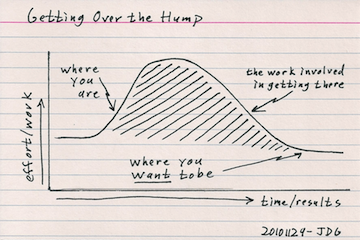
Getting Over the Hump by Jeffrey Gifford
This phenomenon comes up a lot when I talk about Twitter (or—really—any new media tool).
People don't use it. They haven't tried to use it. And they decide not to use it often because it's too much trouble. This reason, in and of itself, is fine. I understand when people have other priorities, especially when it entails meeting writing deadlines.
However, what often happens is, after deciding not to use a tool, they further justify their decision by saying:
It's a waste of time.
It's a fad.
It doesn't really work.
So many marketers and spammers are on there.
Don't people just talk about what they had for lunch?
Something else will take its place.
We all know exactly what's at work here. No one wants to be missing out on something that could be valuable. So whenever we hear something negative about a particular tool or service we don't use, we remember that detail (never the positive stuff!), and parrot it later. We want to believe that our avoidance is not just about perceived low value, but actual low value.
But we really don't know what we're talking about because we have no experience to rely on, just hearsay and rumor.
First, let's stop spreading bad information.
Second, let's admit that we don't have time for some things due to other priorities. That's OK. We all respect people for that.
Third, consider that we all face resistance when faced with a new tool or technology. It usually takes hard work, patience, practice, and experimentation to figure out if a new tool or technology will benefit us. There's a chance it won't work at all. We may risk wasting our time. (Though I don't think this is possible. But that's another blog post.)
Until you learn what's something's about, and get over the hump, you'll never really know the truth.
July 28, 2011
Look for People Who Believe What You Believe
I've loved Simon Sinek ever since I heard his TED talk, Start With Why.
The 99 Percent has now made his more recent talk available, "If You Don't Understand People, You Don't Understand Business." It's a half-hour talk, and it's worth every minute of your time.
But if you don't have time, here are a few important soundbites. For anyone concerned about being more human in marketing and social media (as well as everyday life!), this is a must-watch. If you read my post yesterday, then you know the importance of building community. But your question might be: How do I find my community?
That's what this is all about—from a big-picture perspective.
When we're surrounded by people who believe what we believe, trust emerges. … We need trust. When we're surrounded by people who believe what we believe … we're more willing to take risks, we're more willing to experiment (which requires failure), we're more willing to explore and go somewhere that no one has ever gone before, with the confidence that if we fail, if we trip over, if we turn our backs, that those within our community … will look after us while we're gone, will pick us up when we fall over … Our very survival depends on it.
We're not good at everything. We're not good by ourselves. … We all have our certain strengths and our certain weaknesses, and the goal isn't to fix your weaknesses, the goal is to amplify your strengths, and to surround yourself with people who can do what you can't do.
But it's just not based on skills and application and experience; it's based on what you believe. Simply being good at something and having somebody else being good at what you're no good at doesn't mean you will trust each other. Trust comes from the sense of common values and common beliefs.
If I ask you to go out on the street and find all the people who believe what you believe, you know exactly what to do. You're going to strike up conversations, you're going to start talking to people. Either you'll have a good feeling about them, or you won't. … Sometimes it's quick, sometimes it's slow. But we know how to do it. It's called making friends, it's called dating, it's called networking. We have the innate ability to do it.
The problem is it's not scalable. The problem is you're the only one who had that gut feeling.
But if you know the symbols to look for, if you know how to see the things that people are doing and you can find them … [If they have a symbol], if they have something they're giving off that says something about who they are and what they believe … [then you trust them].
We don't trust everyone. We trust people within our community. But you have to know what to look for. Every decision we make in our lives is a piece of communication. It's our way of saying something about who we are and what we believe. This is why authenticity matters. This is why you have to say and do the things you actually believe. Because the things you say and do are symbols of who you are. And we look for those symbols so we can find people who believe what we believe. … So if you're putting out false symbols, you will attract people to those symbols but you won't be able to form trust with them.
The goal of putting something out there: If you say what you believe and you do what you believe, you will attract people who believe what you believe.
The more you can give of yourself, the more you can give of what you believe, the more you can with discipline say and do the things you actually believe, strange things start to happen … Simply because of one tiny little symbol that was put out there that we are from the same place, we may have the same values, we may have the same beliefs, we're drawn to each other, and [then] we legitimately trust each other and more importantly, will look out for each other.
You'll have to watch the video to find out how Simon earned a homeless person more money in 2 hours than in a full day of begging. And I hope you do watch. The real impact of this video (and his message) comes from his anecdotes/examples, and in the genuineness of his delivery. He is a joy to listen to.
As a P.S., anyone not feeling fulfilled in their work ought to watch RIGHT NOW.
Jane Friedman
- Jane Friedman's profile
- 1882 followers




